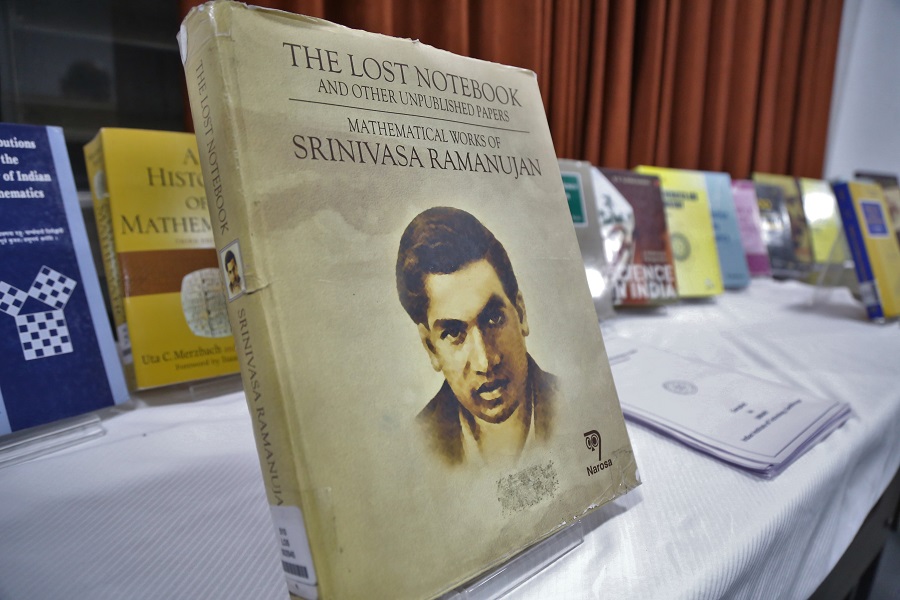“Like the crest on the peacock’s head, Like the gem in the cobra’s hood so stands ganita [mathematics] at the head of all the sciences.” Vedanga Jyotisha (about 1400 BCE)
With origin as old as 1200 BC, Indian mathematics comprises a long and cumulative list of intellectual traditions, with renowned names such as Aryabhata, Brahmagupta, Bhaskara II and Varāhamihira. India has contributed to some of the rock-solid foundations of mathematics through its unparalleled advances in geometry, trigonometry, number systems and Algebra. Apart from Srinivasa Ramanujan, one of the finest mathematicians, Syamadas Mukhopadhyay, K S Chandrasekharan, Harish Chandra and many more have made significant contributions to strengthen this field.
The institute had organised an international conference in collaboration with the Indian Society for the History of Mathematics (ISHM) – Exploring the History of Indian Mathematics – during December 4-6, 2017. The objective was to throw some light on the country’s mathematical achievements starting from the ancient times till the 20th century. Some of the most eminent scholars from India and overseas delivered interesting lectures and talks, and participated in discussions with the students.

Based on the response received during and post this event, the IITGN community felt the need for a more conscious effort towards the dissemination of the rich history of Indian mathematics. As a result, the institute has now embarked upon a new three-year project named History of Mathematics in India (HoMI) with generous financial support from Infosys co-founder Mr Kris Gopalakrishnan.
As a first step towards the fulfillment of this objective, a meeting of the Advisory Council was held on December 20, 2019. Several renowned scholars from India and abroad agreed to be on the advisory board and joined IITGN in this endeavour.
The session kicked off with a welcome note by Mr Nirmal Jha (Advisor, Industry Partnerships, IITGN) during which he emphasised on the importance of spreading public awareness about the crucial fields of mathematics and science, and how this journey should start with exploring the history of these areas. Later, Prof Michel Danino (Visiting Professor in Humanities, IITGN) expressed that there is a need to adequately inform the society of the brilliant contributions that India has made to mathematics. He added that there are only three journals in India which deal with the history of this field. To ensure proper engagement of the people with mathematics, we should create sufficient platforms to deliver information, promote maximum alliances and provide quality guidance.
Mr Dayasindhu elaborated on the four potential activities of this project. The first is the research focused on students, especially post-doctoral fellows. Establishing the best collaborations with scholars to tap the different facets comes second.
The third is organising events such as symposiums, conferences, and talks to spread the word, and outreach (especially targeting the school and college students) forms the fourth point. In the long run, there is a need to progress in a manner that can pique the interest of the people so that they can readily assimilate the usefulness of this field.

Addressing the audience, Prof Sudhir K Jain (Director, IITGN) said that for the foundation of any branch of study to be strong, having an in-depth understanding of its history is essential. The institute focuses on how this history can contribute to the latest research and development. Collaborative research and outreach are the two pillars that can ensure the success of this project. He also stated that proper planning and successful execution could turn it into a long-term plan.

Prof Indranath Sengupta (Associate Professor in Mathematics, IITGN) talked about the action points of this project. It involved technical and human resource development aspects. The technical part comprised effective research, teaching, math education, popularisation and creation of repositories, while the HRD part contained faculty, researchers and junior scholars.
Prof Avinash Sathaye (University of Kentucky) and Prof Mahan Maharaj (Tata Institute of Fundamental Research, Mumbai) joined the discussion via Skype.
During the round table interaction, the participating members provided suggestions and feedback regarding the workflow of this project. Some ideas were about the inclusion of undergrad-level degrees in mathematics (not just MSc), availability of study material in regional languages, careful translation of content from manuscripts to printed form, and starting internships and short-term projects. Others included defining the long-term goals, investment in the education of teachers to ensure proper training of students, promotion of mathematical tourism and popularisation of mathematics via different online (blogs) and offline (newspapers, magazines) platforms.
In the next step, IITGN will host in February a symposium and brainstorming session with experts in the field of history of mathematics in India so as to give shape to the first research activities and thrust areas.

APEKSHA SRIVASTAVA
Senior Project Associate

